La pierre de Coadry, de son nom scientifique staurotide constitue l’un des éléments les plus étonnants du règne minéral et leurs formes géométriques parfaites, parfois en forme de croix, fascinent depuis des temps immémoriaux.
The stone of Coadry, scientific name staurotide constitutes one of the most surprising elements of the mineral reign and their perfect geometrical forms, sometimes in the shape of cross, fascinate from time immemorial.
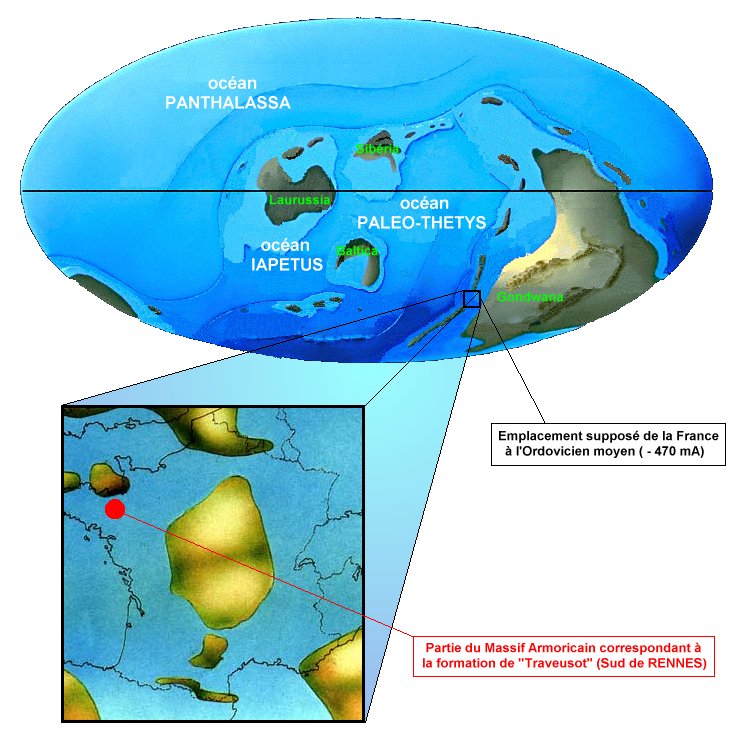
Il y a plusieurs centaines de millions d’années, en se formant, le massif Armoricain a accouché de quelques curiosités géologiques, au premier rang desquelles les staurotides, du grec stauros, “croix”. Appelées également staurolithe et parfois croisettes de Bretagne, on découvre ces pierres dans les régions de Coray, Scaër et de Baud (où vous pouvez aller faire une autre earthcache sur le sujet).
There is several hundred million of years, by forming, the Armorican massif delivered some geologic curiosities, in the front row which staurotides, from Greek stauros, "cross". Called also staurolithe and sometimes croisettes of Brittany, we discover these stones in the regions of Coray, Scaër and Baud (where you can go to make another earthcache on the subject).
Une roche métamorphique / A metamorphic rock
D’où proviennent ces étranges roches qui affleurent dans les champs ou les ruisseaux des Montagnes noires ? Elles ont bien entendu attiré depuis longtemps l’attention des scientifiques qui expliquent qu’elles se classent parmi des roches métamorphiques.
Where from result these strange rocks which appear in fields or brooks of the black Mountains? They naturally drew for a long time the attention of the scientists who explain that they are classified among metamorphic rocks.
Selon Henri Le Bloas, de l’atelier minéralogique de Scaër, lors de sa mise en place au carbonifère, ce métamorphisme régional s’est installé dans des sédimentations essentiellement argileuses datées de l’Ordovicien - entre 440 et 500 millions d’années - et a provoqué le ré arrangement des constituants de l’argile pour donner entre autres des micaschistes localement riches en staurotides. Les géologues lient la présence des staurotides au granit dit de Rosporden, composé de micas noirs et blancs, particulièrement abondants au sud de Coray.
According to Henri Le Bloas, of the mineralogical workshop of Scaër, during its implementation in the Carboniferous period, this regional metamorphism settled down in essentially clayey sedimentations dated of it < i> Ordovicien - between 440 and 500 million years - and caused the ré arrangement of the constituents of the clay to give among others locally rich mica-schists staurotides. The geologists bind the presence of staurotides to the said granite of Rosporden, made up of black, white and particularly plentiful micas in the South of Coray.
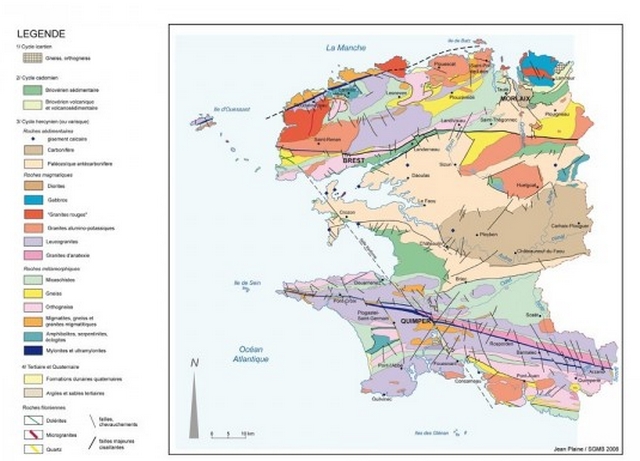
Cette pierre composée d'un silicate complexe d'aluminium et de fer se forme dans des roches alumineuse par métamorphisme de moyen degré. Elles sont donc le résultat d’une transformation ou d’une re cristallisation à l’état solide, liées à des variations de pression et de température. Pour que ces pierres cristallisent librement, il faut des températures entre 500 et 700 ° Celsius. On considère que ces pierres sont composées de 33% de Silice, 48% d'Alumine, 2% de Magnésie et 17% de Sesquioxyde de fer ...
This stone compound of a complex silicate of aluminum and iron forms in rocks alumineuse by metamorphism of average degree. Thus they are the result of a transformation or a re crystallization in the solid state, bound to variations of pressure and temperature. So that these stones crystallize freely, are needed temperatures between 500 and 700 ° Celsius. We consider that these stones are consisted of 33 % of silica, 48 % of alumina, 2 % of magnesia and 17 % of Sesquioxyde of iron ...
Des formes géométriques spécifiques / Specific geometrical forms
Ce minéral brun rouge a la particularité de cristalliser en formant une croix de quatre ou six branches dont la taille peut atteindre plusieurs centimètres, la régularité des cristaux est telle que l'on pourrait penser à une roche polie et façonnée par l'homme.
This red brown mineral has the peculiarity to crystallize by forming a cross of four or six branches the size of which can reach several centimeters, the regularity of crystals is such as we could think in a rock polite and shaped by the man.
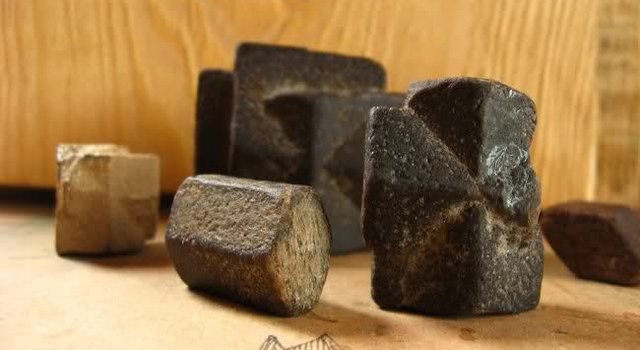
« Il s’agit aussi du secteur (Coadry), écrit Jean-Christian Goujou (docteur en géologie à l'Université de Montpellier II), où les cristaux approchent de la perfection avec des faces terminales bien exprimées et où ils peuvent prendre des dimensions hors du commun ».
" It is also about the sector (Coadry), writes Jean-Christian Goujou (doctor in geology at the University of Montpellier II), where crystals approach the perfection with well expressed terminal faces and where they can take outstanding dimensions ".
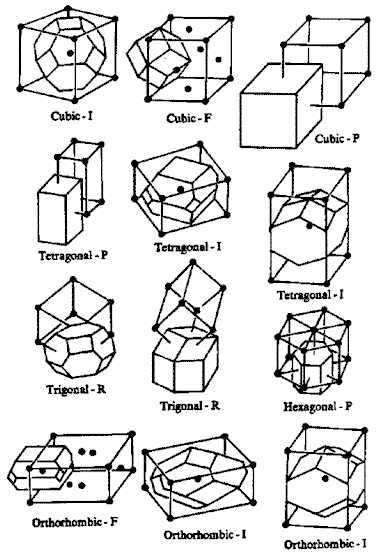
« D’un point de vue mathématique, elles peuvent présenter des angles parfaits, précise Claude Ducoudu, professeur de géologie. L’homme n’a rien inventé, le triangle parfait existait déjà dans la nature ! »
" From a mathematical point of view, they can present perfect angles, specifies Claude Ducoudu, professor of geology. The man invented nothing, the perfect triangle already existed in the nature! "
Pour valider cette earthcache / To validate this earthcache
Rendez-vous aux coordonnées de cette earthcache. Vous y trouverez 2 pierres de Coadry (cherchez bien !). En vous aidant de l'image ci-dessus présentant les différentes formes géométriques répondez à cette première question |Question 1| : Quelle est la forme de ces pierres ?
Meeting in coordinates of this earthcache. You will find 2 stones of Coadry there. To help you of the image above presenting the various geometrical forms answer this first question |Question 1 ¦: What is the form of theses stones ?
Rendez-vous ensuite aux coordonnées N 48° 02.755 W 003° 45.821 |Question 2| que pouvez-vous y voir ?
To the coordinates N 48 ° 02.755 W 003 ° 45.821 |Question 2 ¦ What can you see there?
Un petit tour aux coordonnés N 48° 02.738 W 003° 45.816, vous êtes devant l'enclos paroissial ... |Question 3| quel est le type de roche/pierre utilisée pour barrer le passage ?
A small tour in coordinates N 48 ° 02.738 W 003 ° 45.816, you are in front of the parochial enclosure ... |Question 3 ¦ What is the type of rock/stone used to steer the passage?
Enfin un petit tour aux coordonnées N 48° 02.732 W 003° 45.815, vous y trouverez un calvaire. |Question 4| Combien pouvez-vous compter de "trous taillés" en faisant le tour ?
Finally a small tour to the coordinates N 48 ° 02.732 W 003 ° 45.815, you will find an Calvary there. |Question 4 ¦ How much can you count)of " cut holes " by making the tour?
Il ne vous reste plus qu'à loguer cette cache en "Found it" et envoyez-moi vos propositions de réponses aux 4 questions - via mon profil our par la messagerie interne (Message Center).
You do not have more than to loguer this hiding place in " Found it " and send me your proposals of answers to 4 questions - via my profile our by the internal messaging (Center message).
Je vous contacterai si jamais vos réponses ne sont pas correctes ou tout simplement pour vous féliciter de vos bonnes réponses !
I shall contact you if ever your answers are not correct or simply to congratulate you on your good answers!
Pourquoi la pierre de Coadry ? / Why the stone of Coadry?
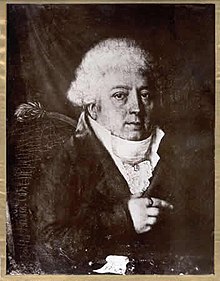 Quoi qu’il en soit, Coadry est renommé depuis des siècles pour ses pierres. À la fin du XVIIIe siècle, dans son ouvrage Voyage dans le Finistère, Jacques Cambry indique qu’on y ramasse « une grande quantité de ces pierres, nommées pierres de croix par les naturalistes. Les pauvres les donnent, les vendent aux pèlerins, aux étrangers… Les participants au pardon de la chapelle devaient en effet tenir dans leur main l’une des pierres pendant la procession ». Au point qu’on nomme maintenant les staurotides « pierres de Coadry ».
Quoi qu’il en soit, Coadry est renommé depuis des siècles pour ses pierres. À la fin du XVIIIe siècle, dans son ouvrage Voyage dans le Finistère, Jacques Cambry indique qu’on y ramasse « une grande quantité de ces pierres, nommées pierres de croix par les naturalistes. Les pauvres les donnent, les vendent aux pèlerins, aux étrangers… Les participants au pardon de la chapelle devaient en effet tenir dans leur main l’une des pierres pendant la procession ». Au point qu’on nomme maintenant les staurotides « pierres de Coadry ».
In any event, Coadry is renamed for centuries for its stones. At the end of the XVIIIth century, in his work Travel in Finistère, Jacques Cambry indicates that we collect there " a big quantity of these stones, named stones of cross by the naturalists. The poor people give them, sell them to the pilgrims, to the foreigners … The participants in the forgiveness of the chapel indeed had to hold in the hand one of the stones during the procession ". To the point that we name now staurotides " stones of Coadry ".
Pour en savoir plus : Le Règne minéral, numéro consacré aux staurotides, n°56, avril 2004 (1bis, rue du Piat, 43120 Monistrol-sur-Loire). Yann Lucas, Joël Rochet, Bretagne, beaux minéraux, belles roches, Palantines, Quimper, 2001.
To know more about it: the Mineral reign, the number dedicated to staurotides, n°56, in April, 2004. (1bis, rue du Piat, 43120 Monistrol-sur-Loire). Yann Lucas, Joël Rochet, Bretagne, beaux minéraux, belles roches, Palantines, Quimper, 2001.